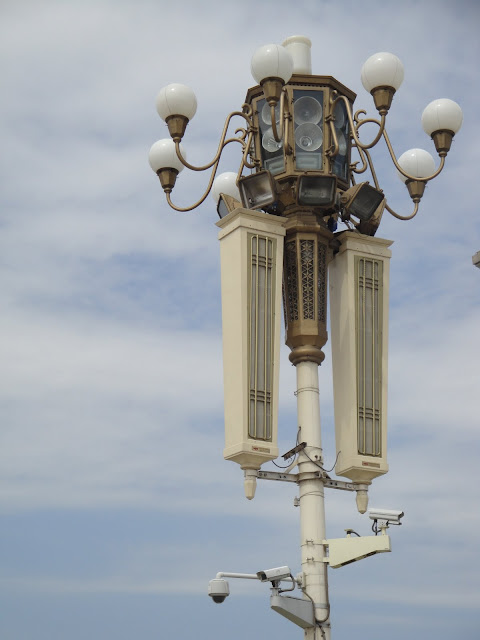After reading about the origins I found that the beginnings of the Krewes date back to the 1830's. Because the government forbade African Americans (or people of color whether slaves or freed) from parading on Mardi Gras, they rebelled by forming their own parades. Unfortunately, for many years competing Krewes did use violence in their effort to gain territory over their parade routes, although this has not been the case for a very long time.
In order to skirt the law they would keep parade times and routes secret often beginning early in the day and changing the routes as they went, sending out "Spy Boys" to see where other Krewes might cross their path. This is a "Flag Boy", but you can see how they identify themselves with their signage in matching beads and sequins.
According to these sources, black slaves began to socialize with the Native Americans in the area at the time (evidenced by many people's ethnic heritage here) and began to adopt some of their traditions for these costumes. At a certain point in history, though, when the government began to move the Native Americans to Reservations in the West, local African Americans distanced themselves from the culture in order to avoid being relocated. the traditions remained however, and in the way that is so very "New Orleans" they took the melange of cultures and evolved it into its own incarnation.
Here you can see how this tradition is a multi-generational family affair. One that is passed on from generation to generation. Each Krewe has a Chief, a Queen, a Flag Boy, a Spy Boy and others as well as the children who march alongside.
Here is another in my series of Mardi Gras Indians parading and dancing. You may also go straight to the YouTube link here.

















































